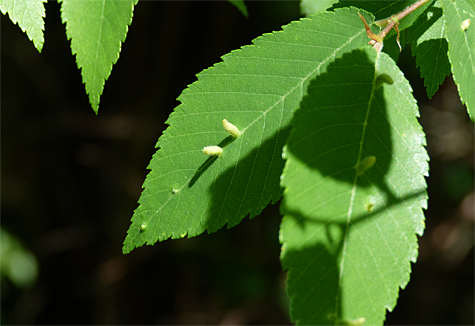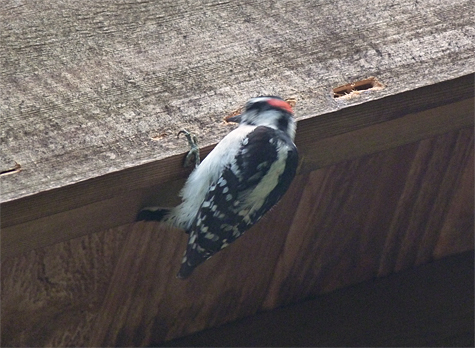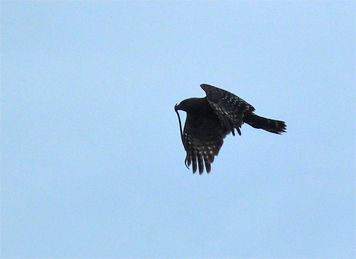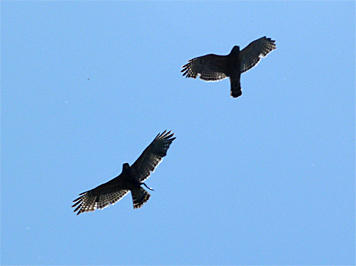Just some sights from the past week.
First spotted by Michelle Kloda as she headed off to Build it! Bamboo one day last week, a Trapdoor Spider. Trapdoor Spiders spend most of their time in a hole in the ground waiting for prey to come walking by. They build a hinged, silken lid to top off the hole which they pop open to reach out and grab any unsuspecting prey that wanders by.




Tiny mites caused the growths on these leaves.

As I approached the Restrooms in Explore the Wild I heard a rhythmic drumming sound coming from the building. I looked up and there a was Downy Woodpecker pounding away on the rake board of the structure, just above the water fountains.




Meanwhile, down by the water, dragonflies patrol.

And green herons perch.


Red-shouldered Hawks have had a nest on the north section of our 84 acre campus this season. I often see the adults flying back and forth to the nest on their hunting excursions.


That’s enough excitement for one day!
Amazing, as always, Greg. That spider seems to have an extra set of short legs up by it’s mouth. Are those antennae or what?
Spiders don’t have antennae. Those extra “legs” are actually mouthparts and are called pedipalps (palps). I agree that they appear more leg-like than mouth-like, but they’re one segment short of being a leg. Legs have seven segments, the palps six. To me they seem more arm-like (very sensitive arms) than legs. Spiders, can and do, sense and hold down prey with the palps.
With that said, the palps perform a function similar to insect antennae, a sensory organ. However, the palps of males perform another function, that of transferring sperm to the female. The male’s palps are typically bulbous at the tip. I think our spider is a female since her palps appear to be narrow at the tips. Females also tend to have shorter, thicker legs.
Confused? I am. The palps look like legs but are actually mouthparts, they act like antennae, and they even have a reproductive function. To top that off, in some species the palps have a claw at the tip. They seem to be shortened, highly sensitive, multifunctional, legs (but more like arms) in close proximity to the mouth which can sense and secure prey.